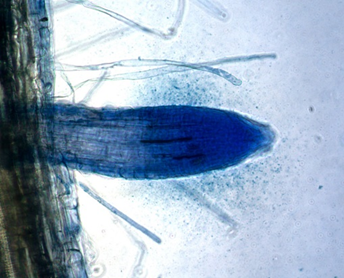Producing High-Quality Forages and Corn Silage
In the state of Wisconsin, corn silage and alfalfa acres surpass 1.7 million acres. Over a million dairy cows call the great state of Wisconsin their home, along with a staggering population of 1.4 million whitetail deer. These dairy farms and affiliated businesses support a vibrant agriculture economy and many rural communities, plus a huge whitetail deer population that also supports a vibrant recreational economy. Even more astounding are all the many different management styles, from small organic herds to large corporate entities that are successfully thriving throughout Wisconsin despite tight profit margins, regulations, and other environmental challenges. All these operations contribute to the economic and social fabric of rural communities.
Regardless of size and management styles, all dairy farmers face the common challenge of producing high-quality forages and corn silage. Top-yielding, highly digestible forages arguably have the biggest impact on any operation’s bottom line. An agronomically balanced manure application can meet the seasonal nutritional needs of a forage or corn silage crop. What these applications cannot address is optimal plant health, periods of undesirable weather and drought, disease, insect pressure, and unfulfilled genetic needs.
Best management practices include visual monitoring of plant health, water management, and season-long plant tissue sampling. These are effective, simple procedures that can make dramatic improvements in digestibility and yield.
Oftentimes, plants exhibit a “hidden hunger” that leads to less-than-optimal yields and digestibility. Even though dairy manure can provide most of a plant’s nutrient needs, what cannot be predicted is the mineralization of these nutrients to meet the physiological nutrient needs at critical growth phases. The cultural practices of proper tillage, disease, insect scouting, and harvest intervals are only one puzzle piece. Often, plant nutrient needs cannot be met by the supply of soil nutrients, regardless of soil test results and antiquated fertilizer practices based on application criteria developed in the early half of the 20th century. Modern hybrids and varieties often require more nutrients than traditional applications of granular fertilizer can provide, as well as the seasonal mineralization of soil nutrients. Oftentimes, we can mitigate these stressors with a correctly timed foliar or precision-applied nutrient application.
Dairy nutrition experts evaluate digestibility by measuring NFDd by fermenting a forage sample in a glass vial containing rumen fluid to replicate what takes place in a cow's rumen in a 30-hour period. The more fiber digested, the higher the value, which means more milk and meat produced per pound of forage.
Nachurs has developed a Start2Finish program for alfalfa and corn silage crops that focuses on feeding the plant and the soil without contributing to the over-application of commercial fertilizers. This program can complement and even improve nutrient management functions by increasing dry matter yield and milk or meat produced per acre. Nachurs focus on applying the right amounts of nutrients at critical times throughout the growing season to prevent or eliminate plant stress and hidden hunger.
The addition of Rhyzo-link PE along with a Bio K in-furrow starter can accelerate the microbial release of soil and manure-applied Phosphorous and other nutrients when plants are in the early root development stage and periods of accelerated growth and developing root mass. This is the perfect time to influence yield, milk per acre, and root mass.
The fascinating photo below shows ‘clouds” of soil bacteria living in proximity to this plant’s root hairs. What is even more fascinating is that recent scientific discoveries show plants ‘farm’ these bacteria by allowing these cells to live in their endophytic tissues, “washing” them with oxygen to harvest their nutrients before releasing them back to the rhizosphere. This process is called “rhizophagy”. Plants “milk” bacteria, in a sense like farmers milk cows, and like cows, propagate bacteria in their rumens to harvest plant nutrients. In addition to focusing on optimum plant nutrition, Nachurs Bio K fertilizers also stimulate and feed soil biology. The result is a healthy plant producing the highest quality, lowered lignin forage that its genetics will allow.

What is noticeable is that in-furrow and foliar applications of Nachurs Bio K products are increasing starch levels in corn silage along with lower lignin levels in all forage crops. Even better, maximizing yields and improving NDFd is a common result of using a Nachurs premium Bio K in-furrow starter, a foliar application of Nachurs Finish Line, plus a side dress or a Y drop Nachurs Kflex application, all balanced with manure applications. Across North America, Nachurs has proven, with the help of multiple 3rd party trials, that we can reduce nutrient applications and still improve yields with the proven Bio K in-furrow and foliar applications. Ask your Nachurs representative about our Start2Finish programs and how they can complement your manure and fertilizer applications to produce profitable forage and corn silage, which is the foundation of success for dairy operations. Remember, we are “our own best customers” as dairy producers when it comes to producing forage.
- Steve Groen CCA, NACHURS District Sales Manager, Wisconsin












